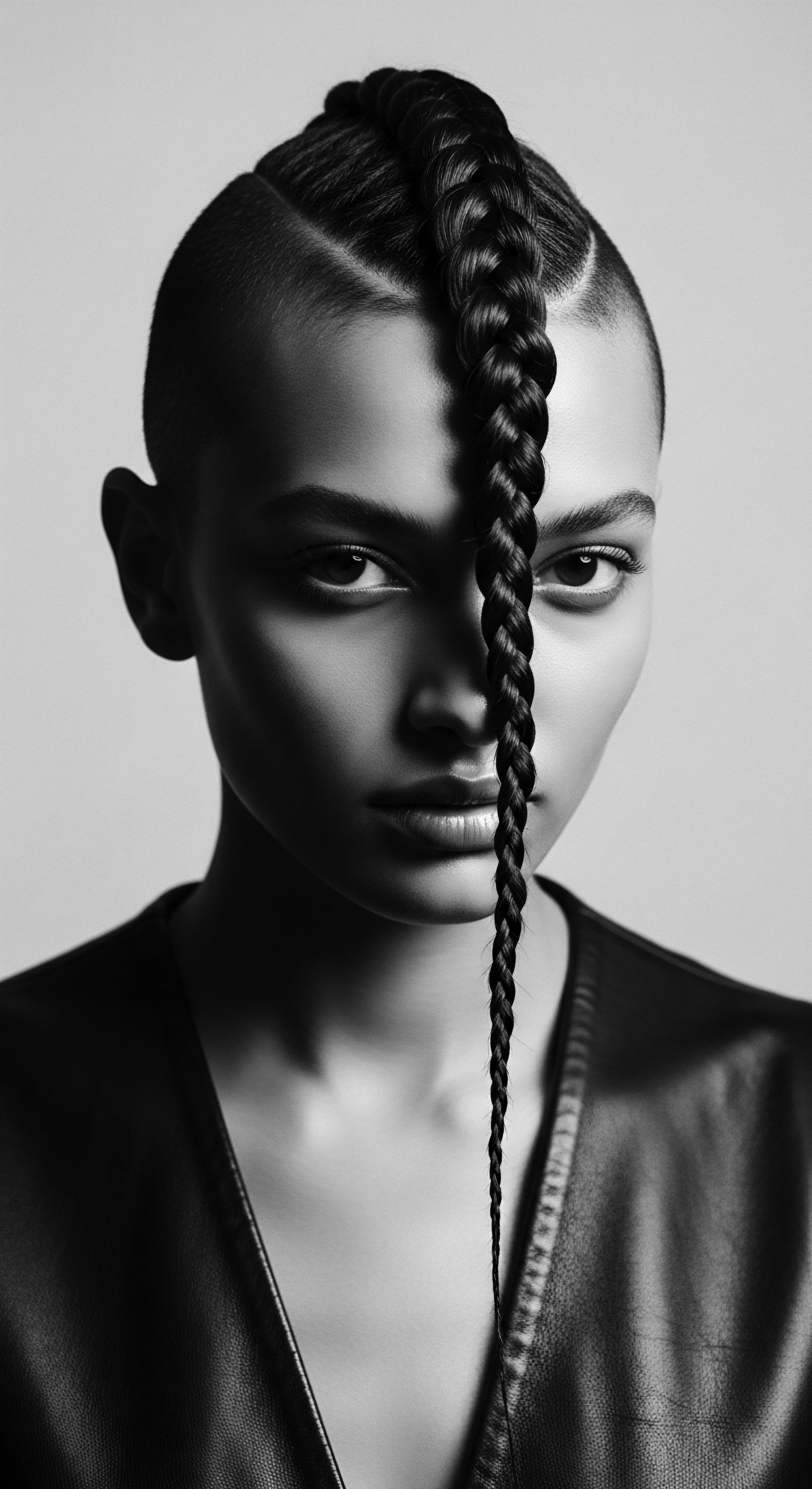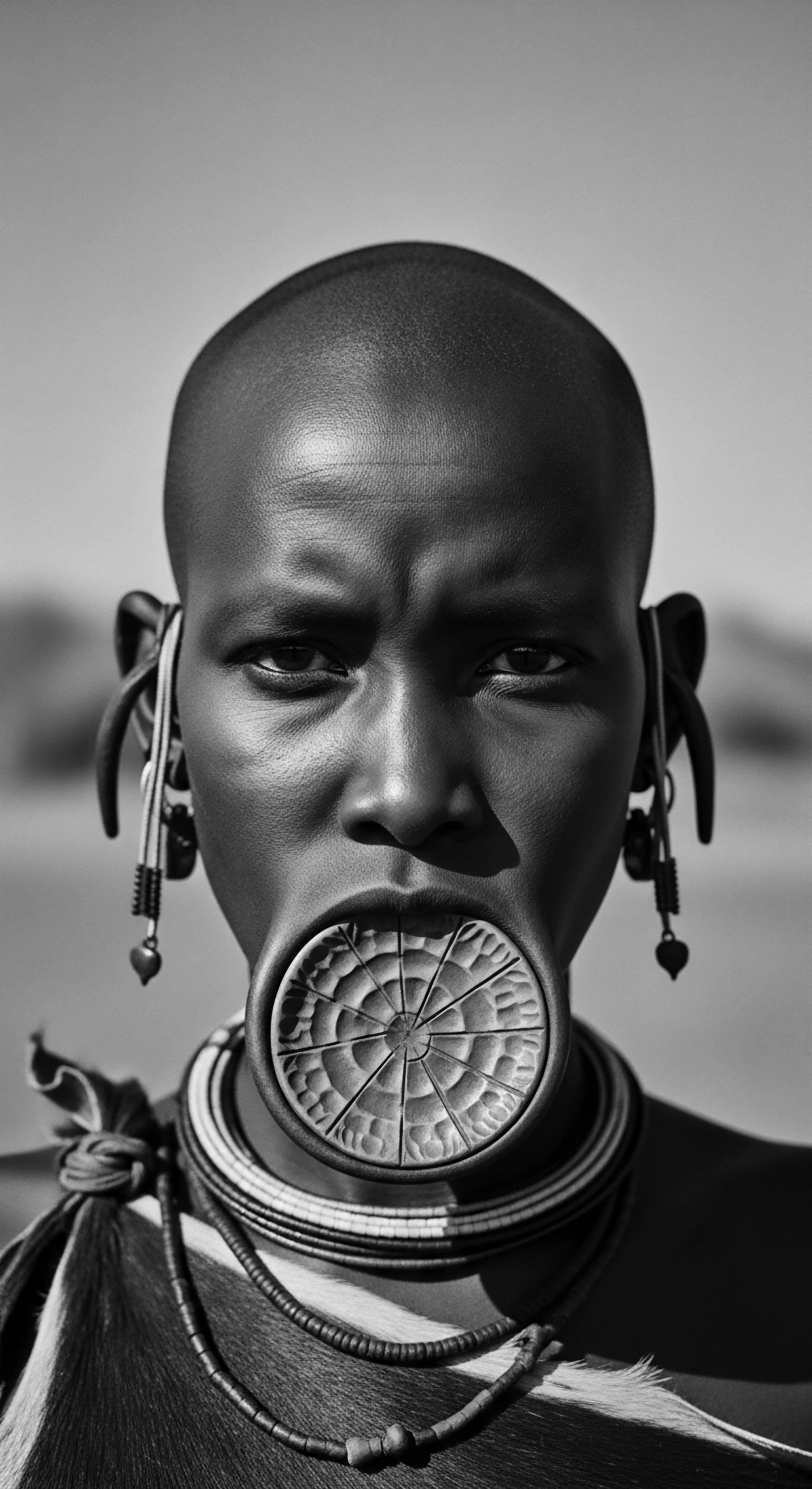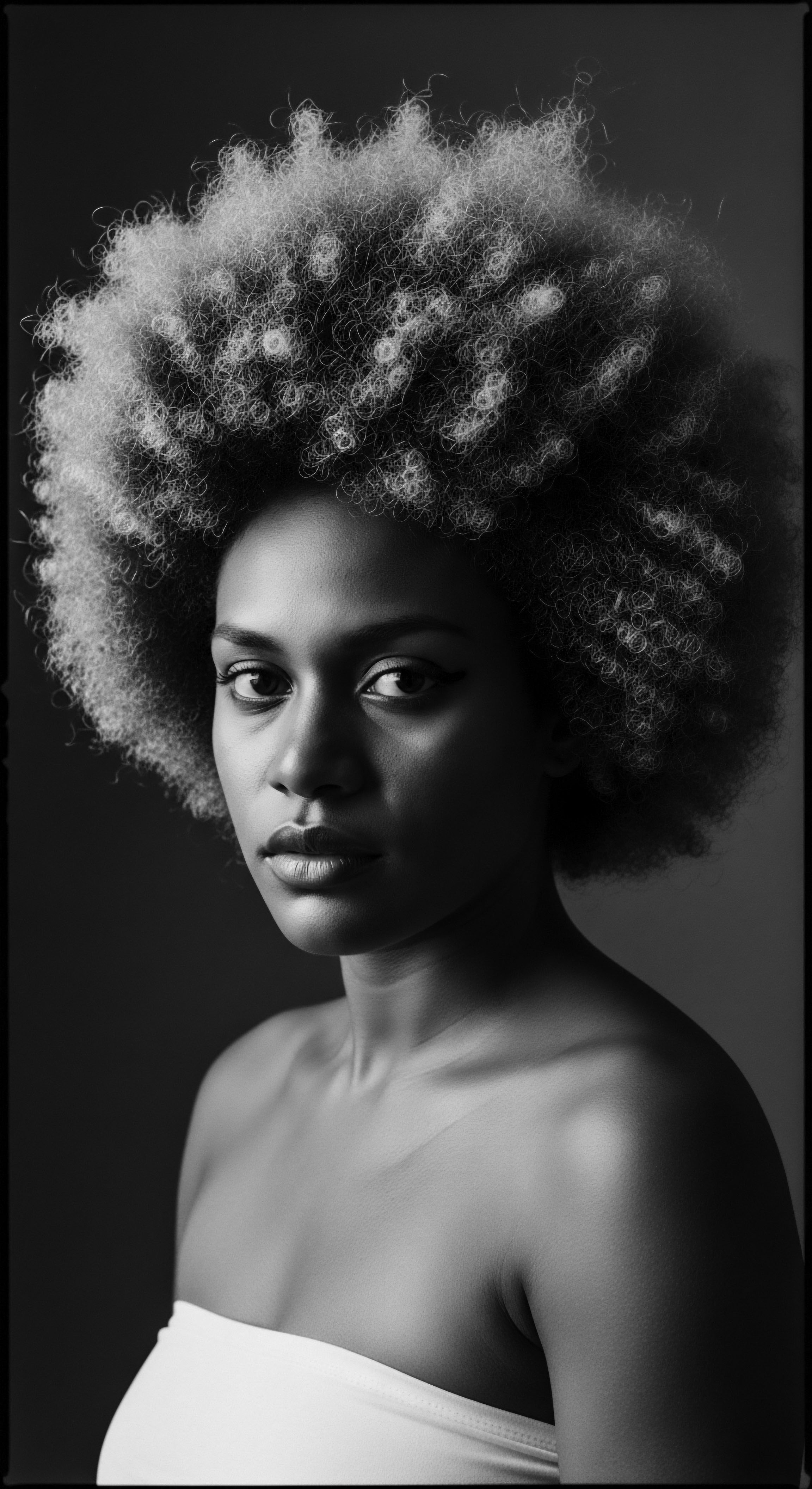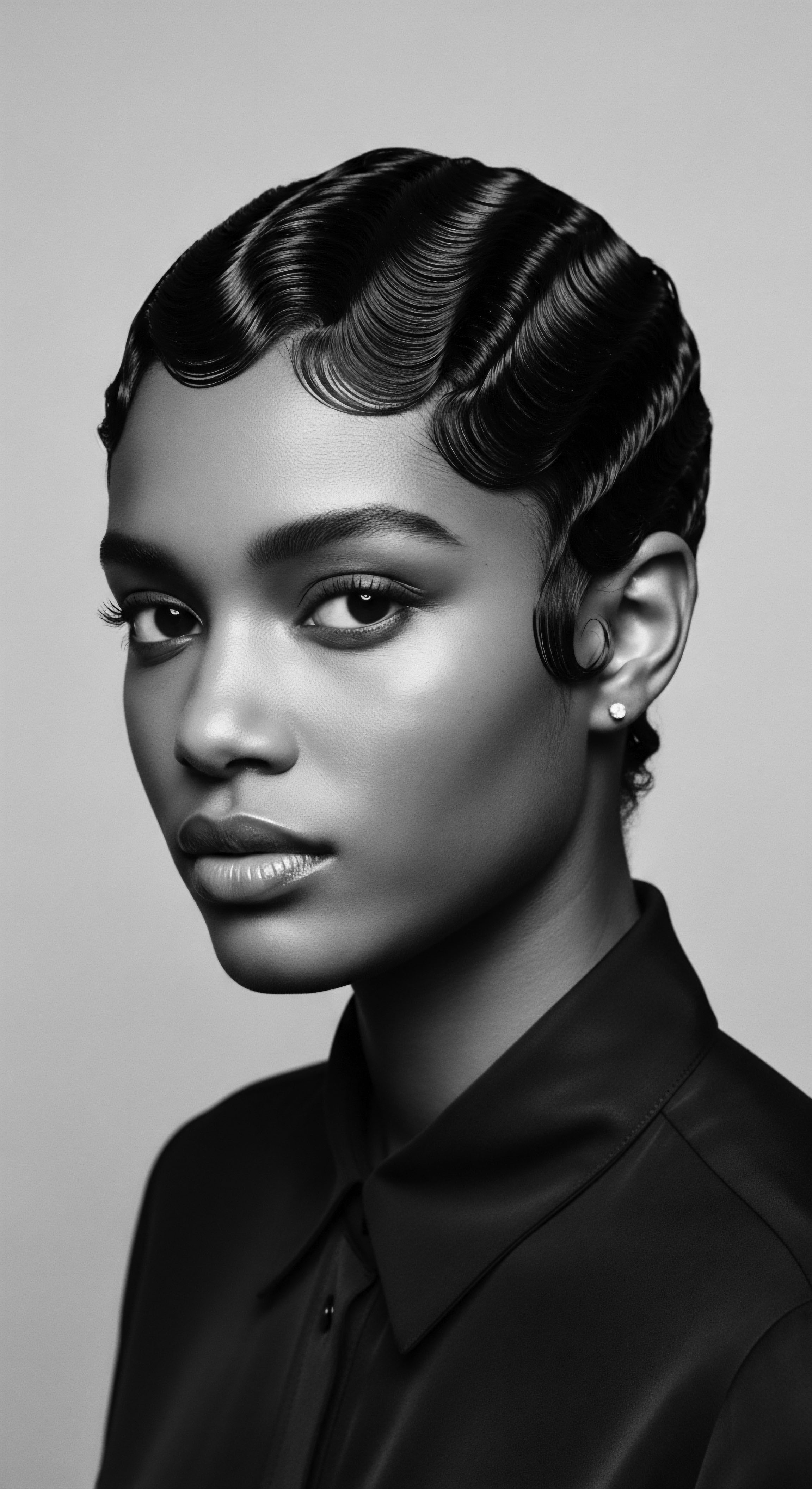
Roots
Consider for a moment the resilient strand, spiraling from scalp, a living testament to journeys, to traditions. For those whose lineage traces back through the sun-drenched plains of Africa, through the forced passage, and across continents where new soil was found for growth, hair holds more than mere form. It embodies memory. It speaks of survival, of identity, and of a beauty deeply rooted in the earth itself.
When we contemplate the ability of botanical dyes to lighten the natural color of textured hair, we step not only into the realm of science, but into the profound archive of ancestral wisdom. It is a query that beckons us to look beyond superficial shifts, toward an understanding shaped by centuries of communal practice and profound connection to the natural world.
The very architecture of textured hair, often described as possessing an elliptical cross-section, contributes to its unique character. Unlike hair with a more circular profile, the curvilinear path of a textured strand creates points of natural fragility. Melanin, the pigment responsible for our hair’s color, lives within the hair’s cortex, encased by the cuticle layers. These outer scales, when healthy, lie smoothly, protecting the inner structure.
In textured hair, these cuticles can be more raised, particularly at the curves, making the strands more susceptible to moisture loss and structural alteration. This foundational understanding is a cornerstone for comprehending how anything, whether a chemical agent or a botanical extract, interacts with hair. Our ancestors, perhaps without the lexicon of modern chemistry, understood this vulnerability through generations of tactile experience and observation. They practiced care that honored the strand’s integrity, long before microscopes revealed cellular intricacies.

How Does Hair Color Originate from Our Ancestry?
Hair color, in all its varied expression, stems from two primary forms of melanin ❉ Eumelanin, which gifts us with brown and black tones, and Pheomelanin, responsible for the warmer spectrum of red and yellow hues. The precise blend and concentration of these pigments dictate the unique shade of each individual’s hair. In textured hair lineages, eumelanin often holds a dominant presence, bestowing the rich, deep shades that have long been symbols of vitality and strength within communities. To lighten hair means to reduce or modify this existing melanin.
Chemical lighteners achieve this by initiating an oxidative reaction, breaking down melanin molecules into colorless compounds. Botanical colorants, for the most part, function through a different mechanism entirely ❉ they deposit pigment onto the hair’s surface or within its outer layers. They add color, they do not inherently diminish the hair’s own native pigment. This distinction is vital when discussing the potential for botanical ingredients to bring about a truly lighter shade.
Hair, in textured forms, carries melanin within a structure honored by ancestral wisdom, a living connection to heritage.
The concept of hair color, throughout many ancestral African societies, held significant cultural weight. Color was not a mere aesthetic choice; it could denote age, marital status, tribal affiliation, or even spiritual connection. The emphasis was often on maintaining the hair’s health and vitality, and on enhancing its natural beauty or adding symbolic meaning through adornment.
While certain practices might have imparted subtle tonal changes—perhaps a reddish tint from specific earth pigments or plant extracts—the Western ideal of stripping dark pigment to achieve a lighter hue was not a widespread or primary objective. The appreciation rested in the hair’s inherent richness and the statements made through its styling and adornment.
The Himba People of Namibia offer a profound historical illustration of botanical and mineral hair application, not for lightening, but for profound cultural expression and protection. Himba women, from a young age, apply a paste known as Otjize to their hair and skin. This distinctive reddish-orange blend comprises butterfat, richly pigmented red ochre (a natural clay pigment), and sometimes aromatic resins. The purpose of otjize extends beyond simple beautification; it serves as a protective layer against the harsh desert sun, acts as an insect repellent, and holds deep symbolic meaning, signifying the earth’s life-giving red soil and blood, the essence of life itself (Our Ancestories, 2021).
The use of otjize alters the perceived color of the hair to a striking reddish tone, but it does so by depositing pigment, not by lightening the native dark melanin beneath. This practice stands as a powerful counterpoint to the notion of botanical lightening, highlighting a heritage where adding depth and protective color was the pursuit, rather than color removal.

Ritual
From the fundamental understanding of hair’s structure, we turn to the living rituals, the purposeful applications of botanical elements, that have graced textured hair through generations. The science of plant-based colorants is a nuanced discipline, far removed from the chemical reactions typical of synthetic lighteners. Most botanical dyes contain compounds such as Lawsone (from henna), Indigo (from the Indigofera plant), Anthocyanins, Flavonoids, and Tannins. These pigments primarily engage with the outer layers of the hair shaft, or, in the case of henna, bond with the keratin protein itself, depositing color onto the hair rather than penetrating deeply to break down melanin.
The outcome is a stain, a glaze, or a tint, deepening existing hues or adding a new layer of color. This coloring action is inherently different from the oxidative process required for true lightening.
Historically, plant matter was selected for its pigmentary qualities, its conditioning abilities, or its medicinal properties. Communities throughout Africa and the diaspora used a vibrant array of plants to adorn and care for their hair. Think of the deep, earthy reds that certain barks and roots could impart, or the rich blues and blacks achieved through sophisticated indigo preparations.
These applications were often part of elaborate ceremonies, rites of passage, or daily grooming routines, connecting the individual to their lineage and their community. The intent was to enhance, protect, and communicate identity, rather than to alter the hair’s intrinsic lightness.

Did Ancestral Practices Aim for Hair Lightness?
To answer directly ❉ the widespread aim in ancestral hair practices was generally not to achieve a lighter hair color in the sense of chemical lightening. Instead, the focus was often on enriching existing dark shades, adding reddish or bluish undertones, or symbolically marking the hair.
- Henna (Lawsonia Inermis) ❉ Used across North Africa, West Africa, and parts of the Horn of Africa for millennia. It deposits a reddish-brown color, bonding with the hair’s keratin (Natural Poland, 2024). Often employed for celebrations, spiritual purposes, or to cover gray hairs, creating rich, deep tones.
- Indigo (Indigofera Tinctoria) ❉ Often used in combination with henna to achieve deep brown or black shades. Indigo deposits a blue pigment on the hair’s surface, and when layered over henna’s red, it creates darker results.
- Logwood (Haematoxylum Campechianum) ❉ Historically employed for deep purple to black dyes, this wood was brought from the Americas and used in parts of the diaspora for its intense coloring capabilities.
- Coffee and Tea ❉ Used for their tannin content, providing subtle brown or black rinses that can add shine and a temporary stain. These were common household remedies for conditioning and slight darkening.
These ingredients, revered for their ability to add depth, sheen, and sometimes medicinal benefits, stand in contrast to the goal of lightening. Their effect is additive, building layers of color. When one considers the Himba women’s use of otjize, or the widespread tradition of henna, the narrative that unfolds is one of celebration of natural depth and the mindful application of the earth’s bounty to signify belonging and strength.
Botanical dyes enrich, tint, and deposit color, honoring existing shades rather than significantly lightening hair.
The rituals of hair care, from the preparation of plant infusions to their careful application, were often communal affairs, fostering bonds and passing down intergenerational wisdom. The selection of plants, the precise timing of application, and the prayers offered over the growing strands were all part of a holistic approach to wellbeing, where hair was inextricably linked to spirit and community identity. This depth of engagement with hair goes beyond surface aesthetics, reaching into the realm of cultural continuity.
| Aspect of Hair Color Primary Purpose |
| Ancestral Practices (Heritage Context) Adornment, symbolic meaning, spiritual connection, protection, enhancing natural depth. |
| Modern Lightening Goal (Contrast) Altering melanin to achieve lighter shade, often for conformity to external beauty standards. |
| Aspect of Hair Color Color Range |
| Ancestral Practices (Heritage Context) Red, brown, black, blue-black, often deep and rich tones. |
| Modern Lightening Goal (Contrast) Blonde, lighter brown, pastel shades requiring significant melanin reduction. |
| Aspect of Hair Color Method of Color Change |
| Ancestral Practices (Heritage Context) Pigment deposition (staining, coating the hair shaft). |
| Modern Lightening Goal (Contrast) Oxidative breakdown of existing melanin pigment. |
| Aspect of Hair Color Ancestral applications built upon the hair's inherent beauty, adding layers of meaning and protection. |

Relay
Our contemporary landscape, shaped by centuries of varying beauty ideals, sometimes presents the notion of “lightening” as a universal aspiration. This can create a dissonance when considering botanical colorants. While botanical dyes are celebrated for their gentle nature and their rich connection to the earth, the scientific truth about their interaction with melanin in textured hair remains steadfast ❉ they are generally not designed, nor are they chemically equipped, to perform significant, permanent lightening.
The perception of lightness can arise from certain botanical treatments that might add golden or reddish undertones, creating an optical illusion of brightness, particularly on strands that already possess some pheomelanin. However, this is distinct from the chemical process of reducing or eliminating eumelanin.
The market sometimes offers “lightening” botanical blends. Often, these contain ingredients like chamomile, calendula, or lemon juice. While these elements might impart subtle golden or sun-kissed effects, especially when activated by sunlight, their action is superficial and temporary. They do not penetrate the hair cortex to dismantle melanin in the way that peroxide or ammonia-based lighteners do.
For textured hair, which can be more delicate and prone to dryness, aggressive lightening agents pose a significant risk of damage, leading to brittleness, breakage, and loss of curl pattern. The ancestral wisdom, echoing through generations, continually guides us towards practices that preserve the integrity and innate vitality of the strand.

Do Botanical Dyes Chemically Alter Melanin for Lightness?
The core function of most botanical dyes rests in their ability to stain or coat the hair. Lawsone, the primary coloring molecule in henna, binds directly to the keratin protein of the hair, giving it a translucent layer of reddish-orange that mixes with the hair’s natural color to produce varying shades of red, brown, or auburn. Indigo molecules adhere to the outer cuticle layers, providing blue tones. These actions are fundamentally different from the chemical oxidation process that alters the melanin molecule itself.
Melanin, particularly the more robust eumelanin common in textured hair, is a highly stable pigment. To truly lighten it, an oxidizer is needed to break its chromophores, rendering them colorless. Botanical components simply do not possess this potent oxidative power in any significant, sustained capacity to lighten dark hair.
True melanin alteration for lightness requires oxidative processes, a function botanical dyes typically do not possess.
Consider the legacy of resilience held within textured hair. Through centuries, hair has been a marker of identity, a canvas for artistry, and a symbol of resistance against forces that sought to diminish its inherent beauty. The pursuit of extreme lightening, often external to many ancestral beauty philosophies, can sometimes inadvertently undermine the hair’s structural health, a truth understood by our forebearers who prioritized practices that fortified rather than stripped. This does not mean that self-expression through color is without merit.
Quite the opposite. It suggests that if color alteration is sought, it should be done with a deep respect for the hair’s natural endowments and its historical strength, choosing methods that honor its unique composition.

How Can We Honor Heritage While Exploring Hair Color?
Navigating contemporary desires for hair color while upholding ancestral respect involves a conscious re-evaluation of what constitutes ‘beauty’ and ‘care.’ It calls for an understanding that enhancing one’s natural hair color, perhaps by adding rich botanical hues or subtle glazes, aligns more closely with heritage practices than attempting to drastically alter its fundamental pigment structure. This approach invites us to ❉
- Seek Depth, Not Erasure ❉ Instead of striving to erase natural dark tones, celebrate their richness. Botanical dyes can deepen browns, impart reddish glints, or add a vibrant blue-black sheen, enriching the hair’s intrinsic spectrum.
- Prioritize Hair Integrity ❉ The foundational principle of ancestral hair care was preservation. Any coloring choice should protect the curl pattern, moisture balance, and tensile strength of the hair. Botanical options, when used correctly, often support this aim.
- Understand the Plant’s True Gifts ❉ Learn what each botanical truly offers. Henna offers red tones and protein binding; indigo offers blues; hibiscus offers reddish tints; cassia provides a golden conditioning glaze. None of these are strong lighteners in the conventional sense.
The conversation around botanical dyes and textured hair becomes richer when viewed through this lens of heritage. It moves beyond a simple “can it or can’t it” to a more thoughtful inquiry into what our hair, and our history, truly call for. It is a dialogue between ancient wisdom and modern inquiry, always with the strand’s soul at its core.

Reflection
The journey into understanding whether botanical dyes can lighten natural hair color in textured hair leads us through the very heart of Roothea’s ethos ❉ a profound meditation on textured hair, its heritage, and its care. We have traversed the intricate pathways of hair anatomy, the specific chemistry of botanical pigments, and the enduring wisdom of ancestral practices. What emerges from this exploration is a deep respect for the inherent character of textured hair and the profound narrative it carries.
True lightening, as understood by chemical processes, stands apart from the gentle, additive nature of botanical colorants. Our ancestors, in their boundless ingenuity and deep connection to the earth, sought to adorn, protect, and signify through their hair, using nature’s palette to add depth and vibrancy, not to diminish or strip away.
The notion of lightness, if achieved through botanicals on textured hair, speaks to subtle shifts in hue, to the imparting of a luminous sheen or a warm undertone, rather than a radical change in foundational shade. This nuanced understanding encourages a celebration of hair in all its natural glory, acknowledging the power held within its unique texture and color. It is a reminder that the path to wellness for textured hair often lies in alignment with ancestral methods ❉ favoring nourishment, respectful adornment, and practices that amplify its inherent strength. The story of textured hair is one of enduring beauty, a living, breathing archive of traditions and triumphs, inviting us always to listen to the wisdom of the strand itself.

References
- Our Ancestories. (2021). Meet The Himba Tribe With Its Red Women.
- Natural Poland. (2024). African Henna ❉ History, Cosmetic Uses, and Modern Applications.
- Sofowora, A. (1982). Medicinal Plants and Traditional Medicine in Africa. John Wiley & Sons.
- Badejo, P. (2007). Hair and the African Woman. Africa World Press.
- Byrd, A. D. & Tharps, L. D. (2001). Hair Story ❉ Untangling the Roots of Black Hair in America. St. Martin’s Press.
- Patton, T. (2006). Our Own Kind of Beautiful ❉ Hair, Politics, and Black Identity. University of Illinois Press.
- Mercer, K. (1994). Welcome to the Jungle ❉ New Positions in Cultural Politics. Routledge.
- Sabinet African Journals. (2018). Indigenous knowledge applied to the use of clays for cosmetic purposes in Africa ❉ an overview.
